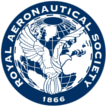Added on 17 December 2010 by admin
Loughborough Branch lecture:
This lecture will present a brief history of UAV systems, leading to the current state-of-the-art and the reasons behind the recent growth in UAV activity. The future prospects for UAVs, both in civil and military operations, will be considered. Challenges in their development, with special emphasis on autonomy and regulations, will be discussed.
Speakers:
Dr. Arthur G Richards
Lecturer in Controls and Dynamics
Department of Aerospace Engineering
University of Bristol
Dr Richards obtained a MEng from the University of Cambridge in 2000. He then went to the Department of Aeronautics and Astronautics at the Massachusetts Institute of Technology, where he obtained a MSc in 2002 for research on trajectory optimization using Mixed-Integer Linear Programming (MILP). He stayed at MIT and completed his PhD in 2004 with research on robust Model Predictive Control (MPC). He came to Bristol later in 2004 when he was appointed a lecturer in control and dynamics.
Added on 17 December 2010 by admin
Loughborough Branch lecture:
The activities of the Supersonic Transport Aircraft Committee in 1950 will be described. The large military supersonic aircraft of the 1960s will be reviewed together with their principle problems, in the main their propulsion systems. Concorde followedon from these military aircraft. It will be described in detail especially in relation to its propulsion system. A number of in-service incidents including visits to NASA for FAA certification will also be described.
Speakers:
Ted Talbot
Ted was educated at Ashby-de-la-Zouch Grammar School followed by RAF Henlow, Loughborough College and London University.
He was first employed by the Bristol Aeroplane Company where he progressed through the offices of Aerodynamics, Projects, Powerplant, Mechanical Engineering and Systems. Over time the company became the Airbus Division of British Aerospace. Ted rose to the position of Chief Design Engineer, Airbus Division, Hatfield.
During 8 years at Filton he was party to introducing a design project to Bristol University. This project was supported by 8 Airbus senior design engineers. The project still continues in modified form.
Post retirement he was recalled to assist with the investigations into the Concorde crash at Gonnesse, Paris in the year 2000.
Added on 17 December 2010 by admin
Speakers: RAeS Loughborough Branch Committee.
Added on 17 December 2010 by admin
Loughborough Branch lecture:
The lecture will describe the background to the formation and evolution of the Saunders Roe Company at Columbine Works, East Cowes. The origins of the “large flying boat” concept are traced that resulted in a UK Government contract being placed in 1945 with Saunders Roe for design and construction of the SR45 Princess, with BOAC as a somewhat reluctant “customer”. Design, development and construction of the Princess and the facilities employed at East Cowes in the course of the project are described together with the build up to the first flight and flight test programme. The reasons for the eventual demise of the Princess are identified that eventually led to all three Princess craft being scrapped in the 1960s, despite various efforts to find an alternative use. Some relics of Saunders Roe and the Princess project that remain in existence are identified, however, the Saunders Roe Company faded from view when it lost its independence in 1958 following acquisition by the Westland Group.
Speakers:
Bob Wealthy
Bob Wealthy has an interest in the history of the British aviation industry with special attention to the companies in the Solent Region. He was born on the Isle of Wight and the Saunders Roe Company was a major part of Island life through to the late 1950s and this and regular attendance at Farnborough Shows influenced his continuing interest in the subject of aviation which has continued on and off to the present day.
He has now retired from work in the defence electronics industry where he started as an apprentice with GEC in 1959. There he was fortunate enough to work in the emerging field of space systems. Having worked on a number of technology and scientific research satellite projects he spent the last 10 years as a systems engineer with the Skynet 5 Military Satellite Communications System project with the EADS Astrium Company that had acquired the consolidated parts of the UK’s space industry from BAE Systems. He now spends more of his time on his aviation heritage research and shares some of the knowledge that he has gained about past achievements in aircraft engineering.






